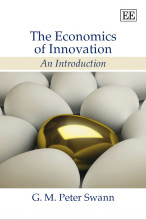Articles - articels - Hockers & Wustenhagen (2010)
5 important questions on Articles - articels - Hockers & Wustenhagen (2010)
Risk of cannibalising their product for goliaths if
This article has aimed at advancing the academic discussion on sustainable entrepreneurship by
(iii) exploring the interaction of entrepreneurial initiatives in small and large companies in bringing about this development.
Our analysis has resulted in a dynamic view of industry transformation, where the initial phase is characterized by
- Higher grades + faster learning
- Never study anything twice
- 100% sure, 100% understanding
while Goliaths have an inherent tendency to react to cost pressures by lowering the sustainability quality of their offerings. However, we see increasing evidence for a next stage of development on both paths. As for “Emerging Davids”, firms such as Wholefoods, Green Mountain Energy, Vestas or Ben&Jerry's have found ways to scale up their sustainable innovations without unduly compromising on their sustainability ambitions.
On the other hand, in the “Greening Goliaths” camp, there are examples of large firms such as Walmart, GE, Kraftor Toyota who have taken on the challenge of building sustainability into their mainstream business. Arguably, the success of emerging Davids, which can also be seen as a potential competitive threat, has been instrumental for some of these Goliaths to embark on the level of sustainable entrepreneurship that they did. Therefore, we would argue that the sustainable transformation of industries is not going to be brought about by either Davids or Goliaths alone, but instead that their interaction is essential.
The question on the page originate from the summary of the following study material:
- A unique study and practice tool
- Never study anything twice again
- Get the grades you hope for
- 100% sure, 100% understanding
































